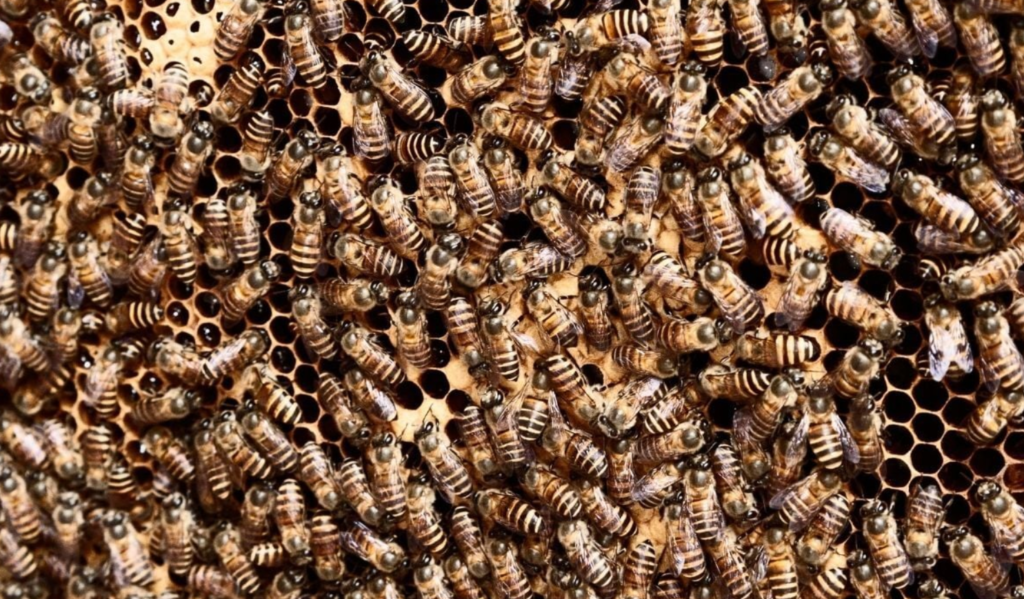Have you ever wished you had a magical aphrodisiac that would attract the people you like? It turns out that our body produces natural aphrodisiacs – pheromones. Pheromones are chemical compounds produced by the animal body that change the behavior of another animal of the same species. For example, human. They differ from other hormones in that they do not have a direct effect on the body that produces them, but on the other person’s body. Although pheromones have no smell, they are called the “scent of love” because when they enter your nose, the receptors begin to send certain signals to the brain.
The existence of pheromones in the human body was first discovered in 1986 by Philadelphia scientist Winifred B. Cutler. She discovered that pheromones are released from armpits, urine and saliva.
Basic facts about pheromones
Medical News Today provides some “fast facts” about pheromones:
- Pheromones are similar to hormones, only they do not work inside the body, but outside
- They influence the behavior of others, for example by stimulating sexual arousal
- Most insects communicate using pheromones
- There are many pheromone products available online, but studies have not yet conclusively proven their effectiveness
- There are 4 types of pheromones

What is the function of pheromones?
The pheromones released by animals determine various behaviors – they trigger alarm signals, sexual arousal, define territory, establish a bond between mother and offspring, warn other animals about threats, etc. Understanding the function of pheromones in insect behavior is much simpler than in mammals. After decades of research, scientists are still debating what functions pheromones play in human behavior.
Better Help says that men produce androsterone, which makes them attractive to women.
Some men who release a lot of this pheromone may not look very handsome, but androsterone signals to other people that this person is extremely attractive.
Women also release pheromones (their name is copulin), but their quantity is four times less than that of men.

The amount of pheromones a person releases affects their sexual activity. People who emit more pheromones tend to make love more often, feel more confident and sexually attractive.
By the way, pheromones can also have the opposite effect – repulsion. You’ve probably noticed that you don’t like someone you’ve just met, seemingly for almost no reason. Often this has to do with pheromones trying to tell your brain that this person is not genetically attractive for reproduction.
Pheromones affect not only sexual desire. A 2009 US study analyzed how newborns recognize their mothers. It was proven that breast milk has a specific scent that is recognized by mother’s children. During the study, two bra pads were placed near the baby. One of them was mothers, and the other was other nursing mothers. Newborns always turned their heads towards the smell of their mother’s milk.
It turns out that pheromones are also related to sexual orientation. A 2005 New York Times publication described pheromone studies conducted on heterosexual and homosexual individuals. Research results show that heterosexual and homosexual men react differently to pheromones. Homosexual men respond to the same scents as heterosexual women.

How do pheromones affect men?
A 2004 study that analyzed women’s attractiveness and the stage of their cycle showed that men can subconsciously know when women are ovulating, i.e. in the middle of their most fertile phase. Although pheromones themselves do not have a specific smell, they are released along with sweat. As part of the study, men smelled the shirts of different women, and it was found that they liked the ones the wearers were in the middle of their menstrual cycle the most.
How do pheromones affect women?
Androsterone, released by a man, can make a woman’s heart beat faster and improve her mood, which means she will find the man more attractive. Testosterone also plays a major role in a man’s attractiveness. In 1995, Swiss scientists conducted a study to find out which men’s smell women find most attractive.
Study participants were asked to wear the same t-shirt for two days and then given to the women for fragrance evaluation. The results showed that women were more likely to be attracted to a scent they rated as unpleasant.
This just goes to show that we aren’t always attracted to those scents that are described as ‘sweet and pleasant’ – in fact there are many more determining factors.
Pheromones and insects
As mentioned above, insects communicate using pheromones. It turns out that they use pheromones in a much more ingenious way than humans:
- Male silkworm moths can follow females for nearly 50 miles by smelling their pheromones.
- In bee colonies, queen bees release a pheromone that coordinates the activity of the entire bee colony.
- Some parasitic wasps have evolved to track their prey using pheromones.
- Some male cockroaches and locusts produce pheromones, also known as aphrodisiacs, that attract females during mating.
- Bolas spiders are able to secrete a sex pheromone from certain female moths that attracts males. This is how the male moths fall into their webs.

Types of pheromones
Currently, 4 types of pheromones have been identified and studied the most:
- Releasers – they have a sudden effect on the behavior of the person who feels them. They are mainly related to sexual attraction.
- Signalers – they provide information about the hierarchical position of the animal, about what the animal has recently eaten, and therefore about the availability of food. They are also very important when choosing a partner.
- Modulators – they affect neuropsychological parameters. Although difficult to detect in animals, they are extremely popular in human studies, usually found in human sweat.
- Primers – these pheromones also affect endocrine parameters, including the menstrual cycle. Since endocrine changes also affect neuropsychological parameters, the actions of these and previous pheromones overlap.

Pheromone scents
Since the beginning of pheromone research, the perfume industry has found a niche for attracting customers by selling them the idea that a certain scent can make them more attractive and it will be easier to seduce other people.
Pheromone perfumes are created by including animal or plant pheromones in the composition. Synthetic human pheromones are also sometimes used in production, but this is less common. Generally speaking, the creators of these perfumes try to capture the pheromones released by organisms, which are responsible for sexual attraction, in the perfume bottle.
They are mostly obtained from musk, civet, amber, etc. Androsterone is the most common component of human pheromones. The effect of perfumes does not directly depend on the smell, but on the strength of the pheromone concentration. You will not feel the effect immediately, you have to be in contact with other people.
Of course, you should not cherish illusions that pheromone perfume will make your chosen one fall in love with you.
They can stimulate your communication, interest, and then everything will depend on you. You can also focus more on things that increase your natural pheromone release in your body.

How to naturally increase the release of pheromones in the body?
The Good Trade describes different ways to stimulate your body to produce more pheromones:
- Exercise regularly – sweat produces pheromones, so the more you exercise, the more active they will be. Exercise also cleanses your body of toxins, cleans your pores, and when they are clean, pheromones become stronger. Another reason to exercise is to produce testosterone.
- Get enough sleep – Lack of sleep can affect a person’s pheromone levels as the hormones in the body go out of balance.
- Eat foods that stimulate pheromone release – celery, parsnips and truffles can enhance pheromone release.
- Use dietary supplements – zinc and dehydroepiandrosterone sulfate (DHEA-S) stimulate the production of pheromones in the body. These substances are also naturally formed in our body, they are considered precursors of sex pheromones.
Natural pheromones
Give up sex and masturbation once in a while – let your body and hormones “recharge” again. After not experiencing an orgasm for some time, the production of testosterone and estrogen is activated, which affects the production of pheromones.


